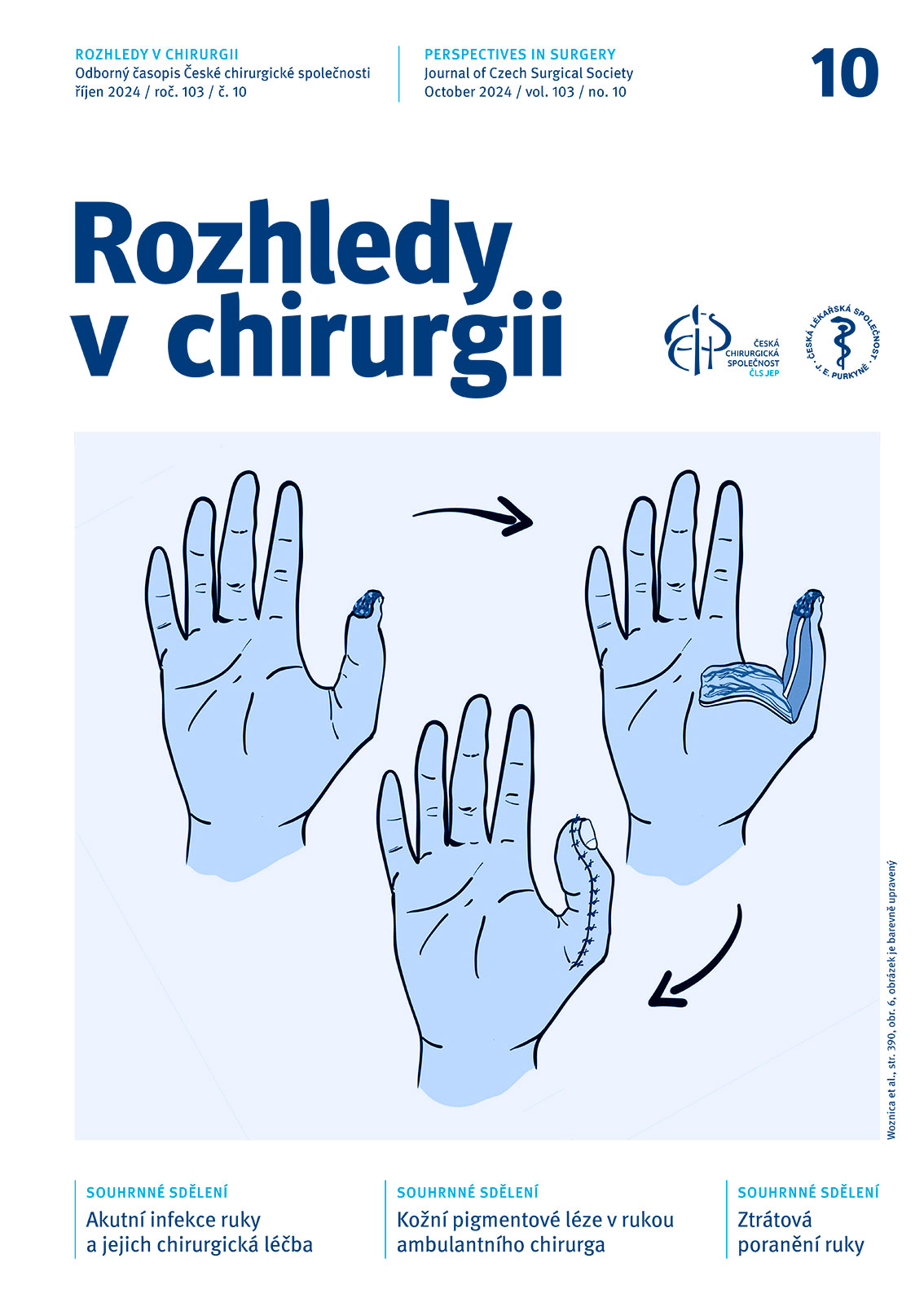Abstract
Introduction: The goal of this work is to determine, using the analysis of our own patient group and current professional publications, in which cases fractures of the scaphoid waist can be treated conservatively by short-term plaster fixation with a low risk of non-union developing.
Material and method: A group of 19 patients (17 men and 2 women) with mean age of 31 years (range 20-43, SD 7.3) with fractures of scaphoid waist indicated for conservative treatment. The diagnosis was made on the basis of X-ray and CT examination. Conservative therapy consisted of applying plaster fixation of the wrist and thumb for a minimum of 6 weeks in completely non-dislocated fractures (mean 6.4 weeks, range 6-10 weeks). The other fractures were immobilized with a plaster cast for a total of 9 weeks. All patients were followed for at least 6 months.
Results: At six months after the injury, two of the patients reported mild pain at rest (once with healed fracture, once with non-union). Pain during movement occurred in 5 patients with a developed non-union. Good healing of the fracture in the anatomical position was observed in 10 patients (53%), in two cases (11%) an angular dislocation occurred during healing, and in 7 patients (37%) the result of treatment was a non-union.
Conclusion: Conservative therapy is suitable for fractures of the scaphoid waist without dislocation and with dislocation of bone fragments up to 1.5 mm. In these fractures, conservative therapy has a low risk of non-union developing. X-ray imaging is insufficient. In case the fracture line does not appear on the X-ray and there is a significant clinical finding, especially in the group of patients with a typical occurrence of a fracture of the scaphoid waist, i.e. in young men aged between 25 and 40 years, CT examination must be performed. The decision on the type of treatment must always be based on the CT scan.
doi: 10.48095/ccrvch2024400


